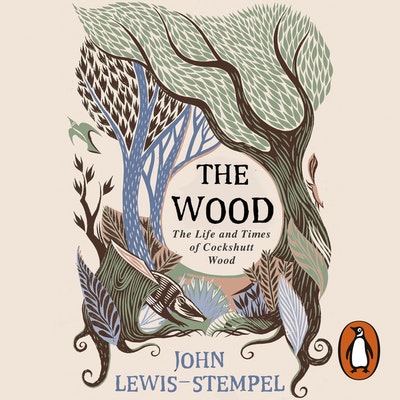- Published: 5 May 2016
- ISBN: 9781473525832
- Imprint: Transworld Digital
- Format: EBook
- Pages: 304
The Running Hare
The Secret Life of Farmland
- Published: 5 May 2016
- ISBN: 9781473525832
- Imprint: Transworld Digital
- Format: EBook
- Pages: 304
A beautiful love letter ... to a wheat field [and] a pleasurable read
BBC Countryfile
Englightening and stylish...Readers who enjoyed the author’s last book, Meadowland: The Private Life of an English Field, will find much in the same vein here: a mix of agricultural history, rural lore, topographical description and childhood memories. I learned a good deal.... Lewis-Stempel is a fine stylist, adroitly conjuring scenes in which "medieval mist hangs in the trees" or "frost clenches the ground"...
Sara Wheeler, Observer
That John Lewis-Stempel is one of the best nature writers of his generation is undisputed.
Country Life
A beautifully observed book, full of poetic descriptions. Brilliant and galvanising.
Sunday Express
Fans of Lewis-Stempel's bestselling Meadowland will find here the same easy-reading prose fuelled by daft-as-a-brush enthusiasm and embellished with lyrical flourishes ... the mud-spattered details of a farming life lend The Running Hare a unique realness.
Mail on Sunday
A stirring rural fantasia...Lewis-Stempel's heart and mind are absolutely in the right place. I salute him and I adored his appreciation of the quirky detail.
The Times
He describes beautifully the changing of the seasons and the habits of animals such as the hares that make their home in his field. The book is a superb piece of nature writing.
Ian Critchley, Sunday Times
This rather beautiful book is very much in the mould of the new nature writing, but it’s also wondrously inspiring.
Marcus Berkmann, Daily Mail
[John Lewis-Stempel] writes in a mood of wistful regret, intriguingly melding history with memoir, rich description with his own enthusiasm to rekindle what has been lost, leaving the reader with a greater understanding of what might lie on the other side of the hedge.
Nudge
There’s a quiet ferocity running through [The Running Hare], powerful yet subtle, refreshingly practical and quotidian … There is a raw honesty to this book.
TLS
Lewis-Stempel is a fourth-generation farmer gifted with an extraordinary ability to write prose that soars and sings, like a skylark over unspoiled fields. This wonderful book (a worthy follow-up to his brilliant Meadowland) is a hymn in praise of enlightened farming methods which reject lethal chemicals and allow insects, birds and flowers to thrive, as once they did. As an experiment Lewis-Stempel rents an ordinary arable field (his own property is a hill farm) to plough and manage in the old-fashioned way, transforming it into a traditional wheatfield to attract wildlife. Even — he hopes — hares. The work is back-breaking but the rewards are sublime. Like the hares, Lewis-Stempel’s words dance.
Bel Mooney, Daily Mail
A keen observer of the natural world, Lewis-Stempel's writing is quietly passionate, intensely descriptive and beautifully detailed as he juxtaposes seemingly antithetical ideas – wildlife and farming, and hares and humans. Throughout the book, the author skilfully interweaves his life story and the history of farming into the story of this project. This book is deeply moving and ultimately, hopeful.
Forbes
Even better than Meadowland, The Running Hare is funny, erudite and a delight from start to finish. John Lewis-Stempel knows the land, loves it – and works it. He is a farmer, muddy-booted and diligent, who effortlessly recreates on the page the intimacy with the natural world that his daily rounds bring. But farming is also the enemy in his piece – the farming of the mega-tractor and the sprayer, the farming that has, during his lifetime, quietly destroyed the greater part of the country's flora and birdlife. The Running Hare is an important book, as richly layered and rewarding as the soil of an unimproved field.
Philip Marsden
Editor's Choice, Natural History: the renowned nature writer explores the natural histories of the wild animals and plants that live in and under our ploughland ... If you'll forgive the pun, there's a down to earth quality to his nature writing that I find particularly appealing.
Caroline Sanderson, Bookseller
Stempel's writing is quietly passionate, intensely descriptive and beautifully detailed. This book deeply moving and ultimately, hopeful ... One of the ten best conservation and environment books of 2016
Forbes
Minute detail, lovingly observed and subtly expressed, allied to the broader picture of the harm we are doing to our countryside through intensive farming, and the good that we could be doing if we worked with nature instead of against it. I love the earthiness of John Lewis-Stempel's writing - for example, his frustration at the job of binding straw into sheaves by hand: 'The straw scratches, the nettles sting, the thistles prickle. Hand-binding is one of those impossible rural jobs which require gloves, though the self-same gloves prevent the very nimbleness needed.' That sentence could not have been written by some fine-fingered fellow simpering by the hedge over a notebook. The author has seen it, done it, sweated it, and has earned the right to write about it with straw-cut fingers and itchy palms. Brilliant stuff.
Christopher Somerville
A fine writer with wonderful descriptive skills and a winning sense of humor ... Thus, this is a book for the localist, the agrarian, the nature-lover—the conservative who’s truly interested in conserving.
The University Bookman
A beautifully written paean to the countryside in all its rich diversity.
PD Smith, Guardian
A beautifully written paean to the countryside in all its rich diversity
Guardian











